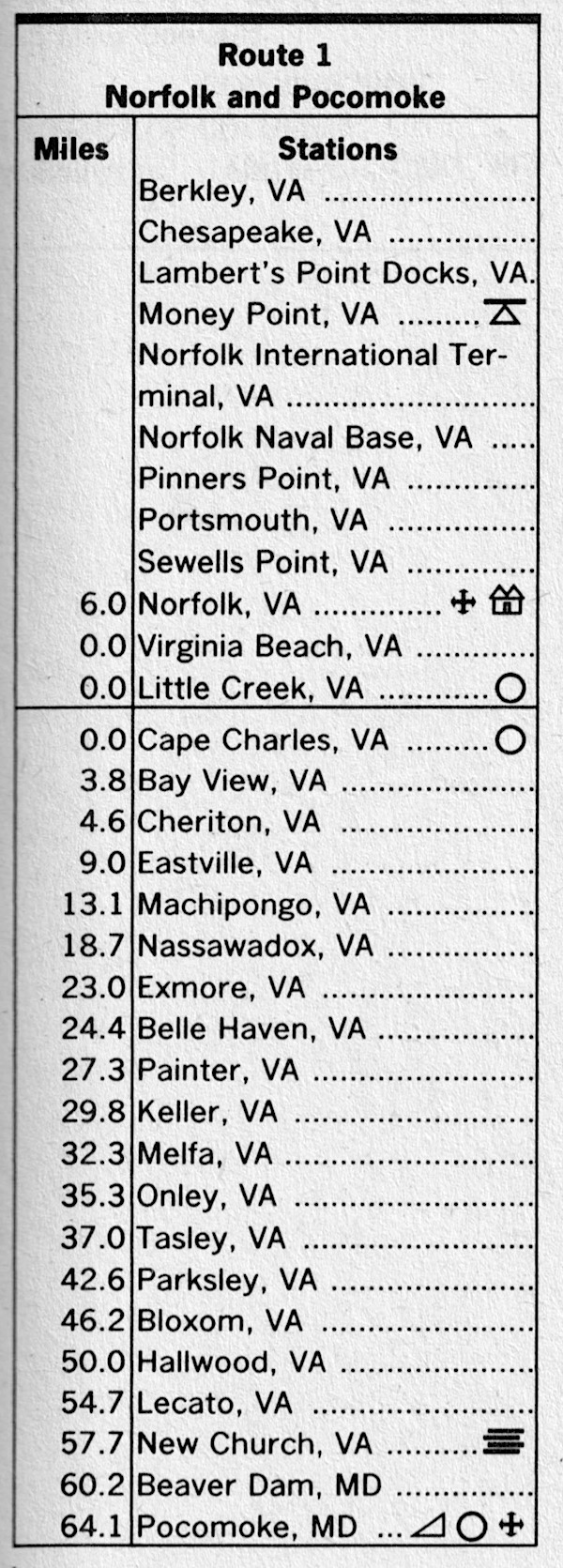
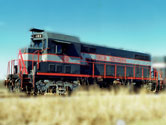



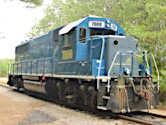
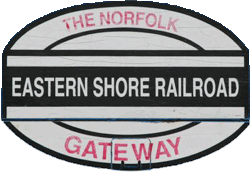 |
Eastern Shore Railroad"The Norfolk Gateway" |
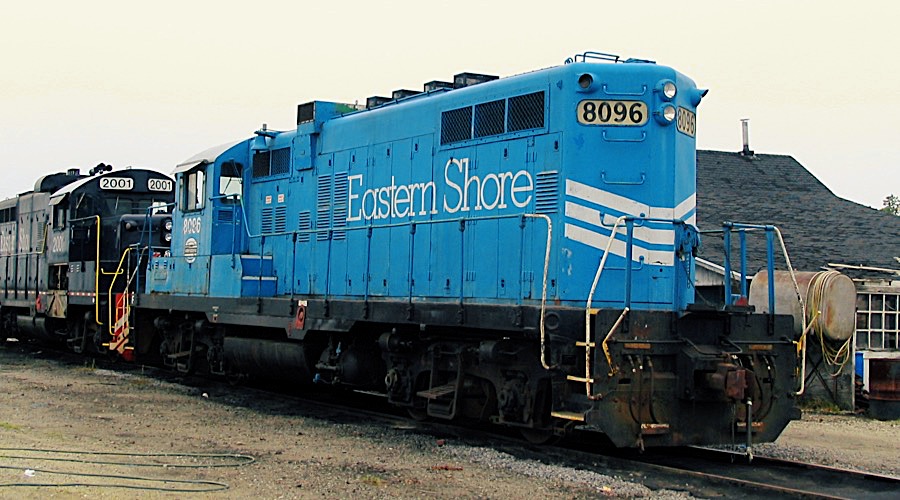
details
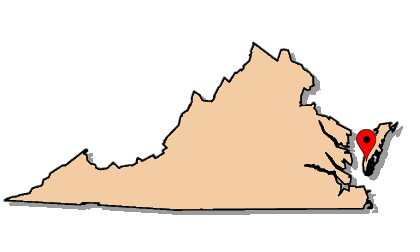 The Eastern Shore Railroad operated shortline freight service on 65 miles of former Pennsylvania Railroad branch line, a route first opened in 1884 to serve the eastern peninsula of Virginia. From a Conrail connection at Pocomoke City, MD, the line traveled south along the "Eastern Shore" peninsula to the port town of Cape Charles, serving a number of customer along the route -- including the Indian River power plant owned by Delmarva Power & Light. From
Cape Charles southwest, the line connected to Norfolk area railroads by means of a rare 24 mile carfloat operation. The ESHR was incorporated in 1981 to take over the line from Conrail. The Eastern Shore operated with marginal success until 2005, when the route was taken over by the Bay Coast Railroad, operated by Cassatt Management. In 2018, the Delmarva Central Railroad took over the portion between Pocomoke City and Hallwood, Virginia where the remaining customers are located.
The Eastern Shore Railroad operated shortline freight service on 65 miles of former Pennsylvania Railroad branch line, a route first opened in 1884 to serve the eastern peninsula of Virginia. From a Conrail connection at Pocomoke City, MD, the line traveled south along the "Eastern Shore" peninsula to the port town of Cape Charles, serving a number of customer along the route -- including the Indian River power plant owned by Delmarva Power & Light. From
Cape Charles southwest, the line connected to Norfolk area railroads by means of a rare 24 mile carfloat operation. The ESHR was incorporated in 1981 to take over the line from Conrail. The Eastern Shore operated with marginal success until 2005, when the route was taken over by the Bay Coast Railroad, operated by Cassatt Management. In 2018, the Delmarva Central Railroad took over the portion between Pocomoke City and Hallwood, Virginia where the remaining customers are located.
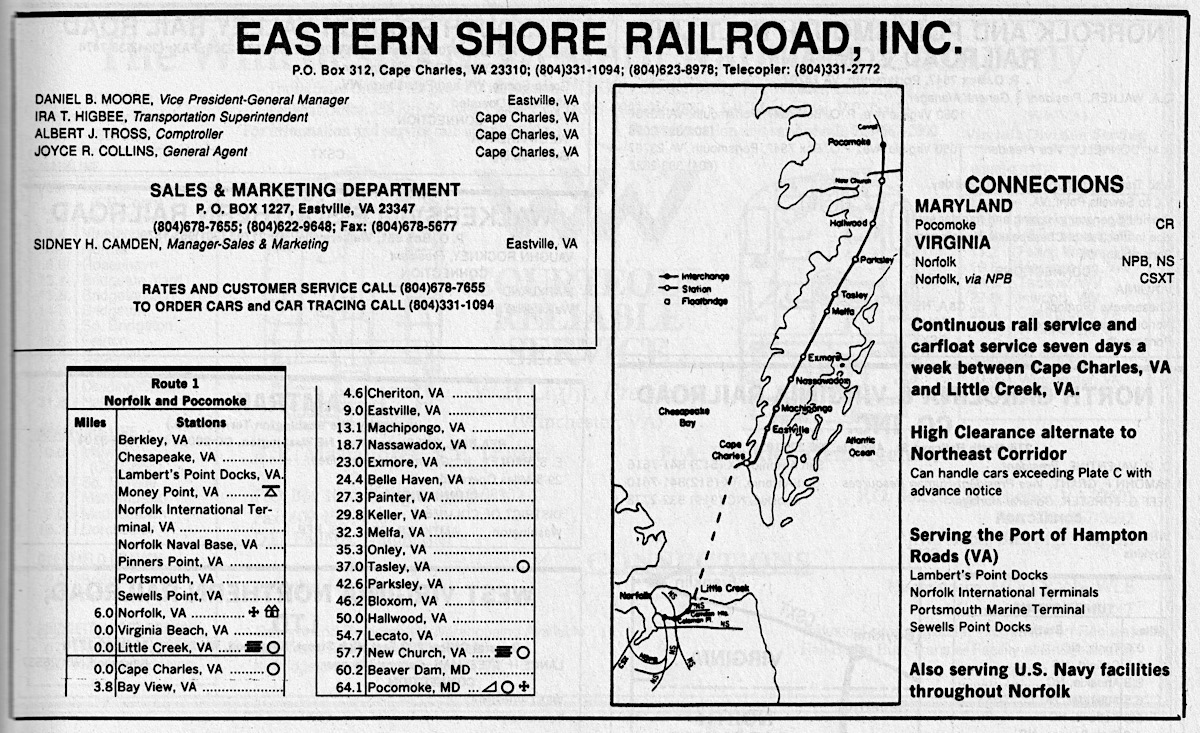
1994 Official Guide ad / collection
Motive Power
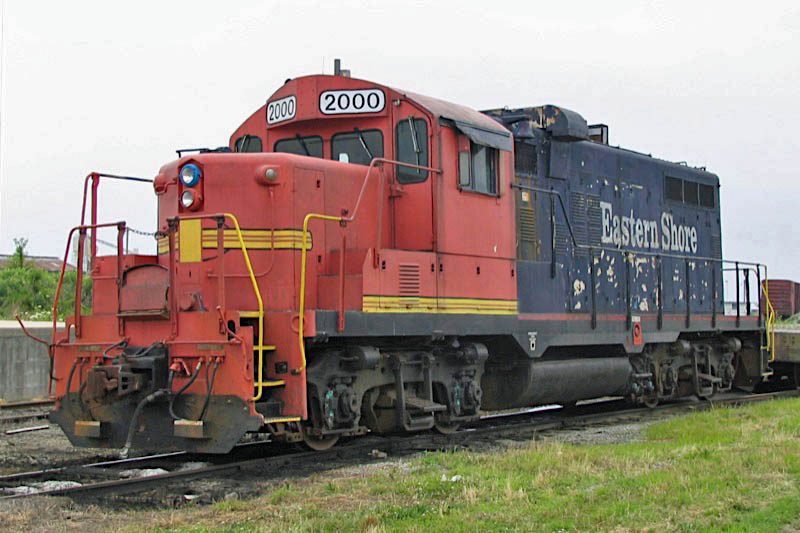
Eastern Shore #2000
Cape Charles, Va / May 2004 / RWH


Eastern Shore #2000
to Illinois Central Gulf GP10 #8250, 1970
to Precision National #2000
to Eastern Shore #2000
to Bay Coast #2000

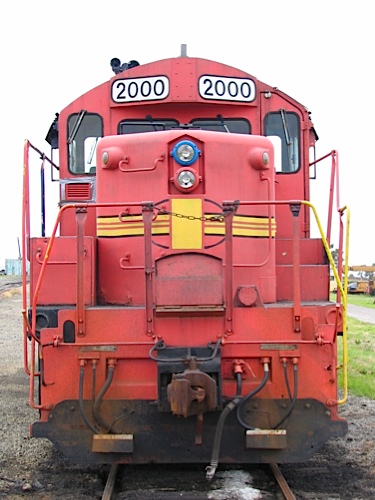
May 2004 / RWH
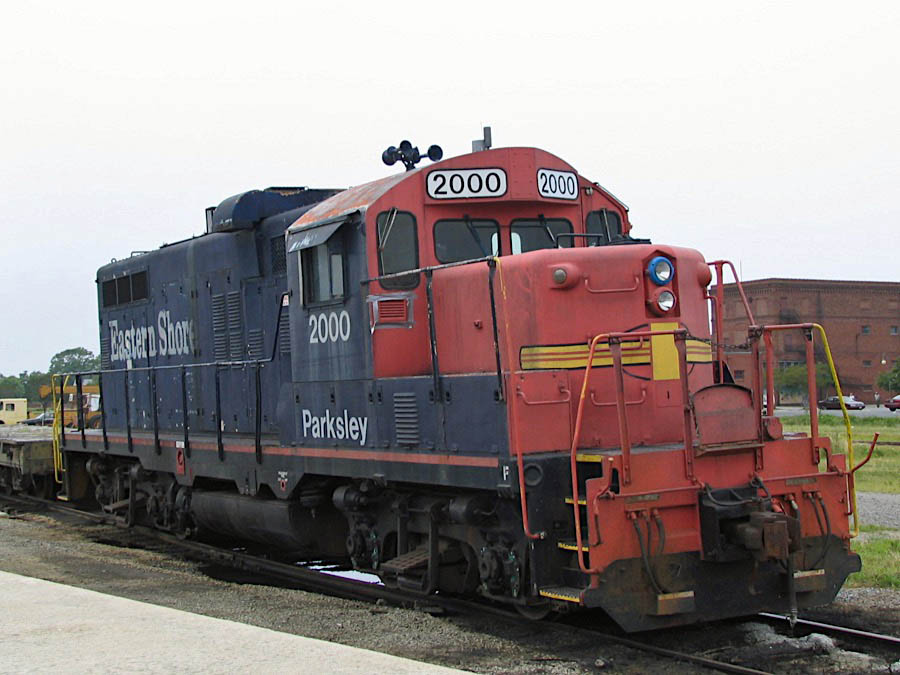
Cape Charles, Va / May 2004 / RWH
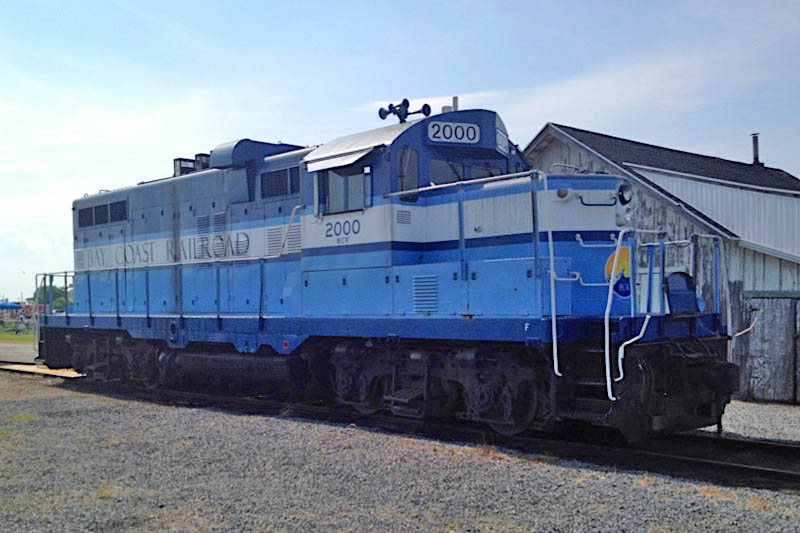
Bay Coast #2000
Cape Charles, Va / Jun 2013 / Bryan Foster
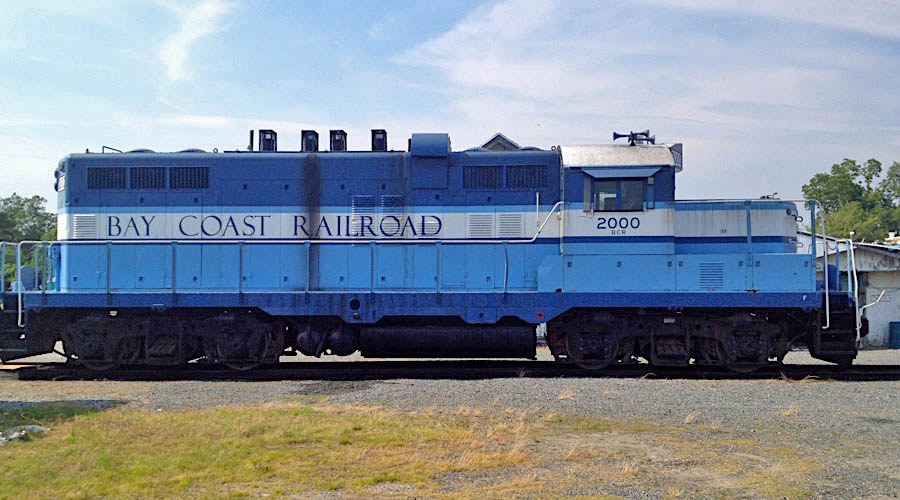
Cape Charles, Va / Jun 2013 / Bryan Foster
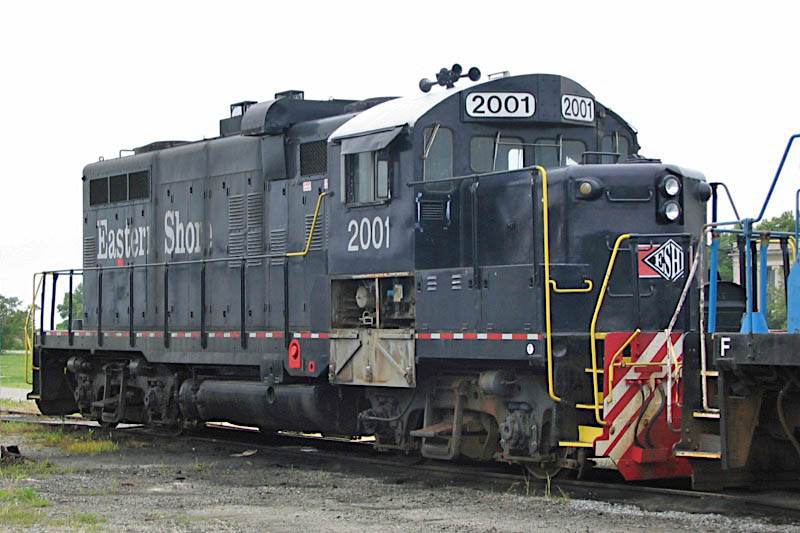
Eastern Shore #2001
Cape Charles, Va / Jun 2013 / Bryan Foster


Eastern Shore #2001
to Illinois Central Gulf GP10 #8362, 1972
to Eastern Shore #2001, 1988
to Bay Coast #2001

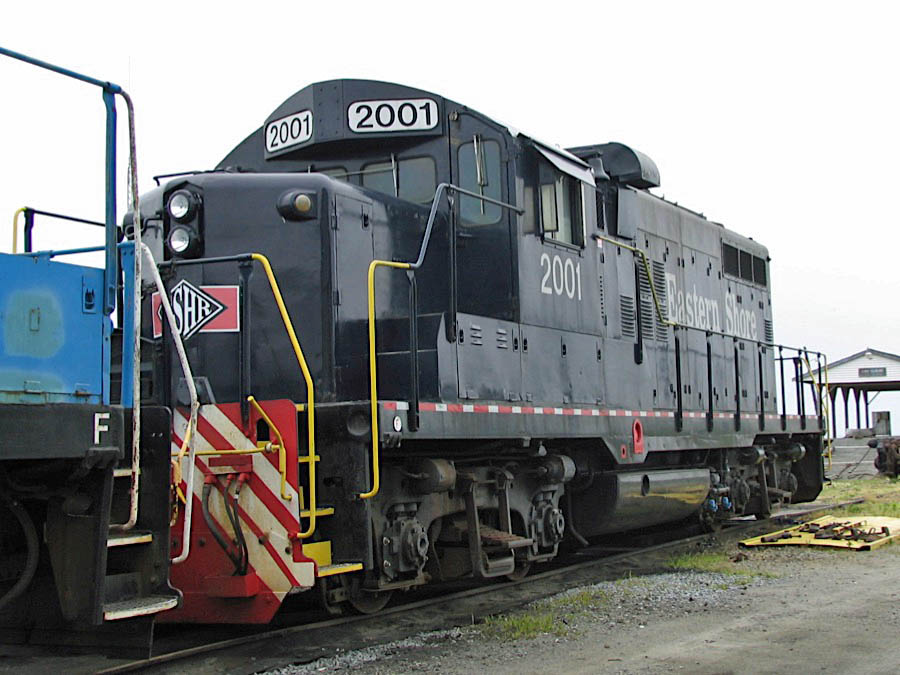
Cape Charles, Va / Jun 2013 / Bryan Foster
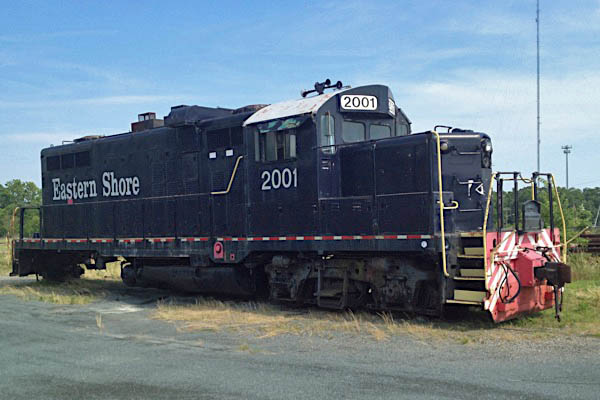
Cape Charles, Va / Jun 2013 / Bryan Foster
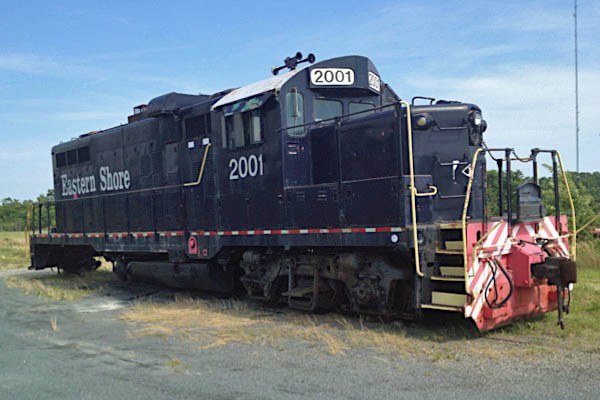
Cape Charles, Va / Jun 2013 / Bryan Foster
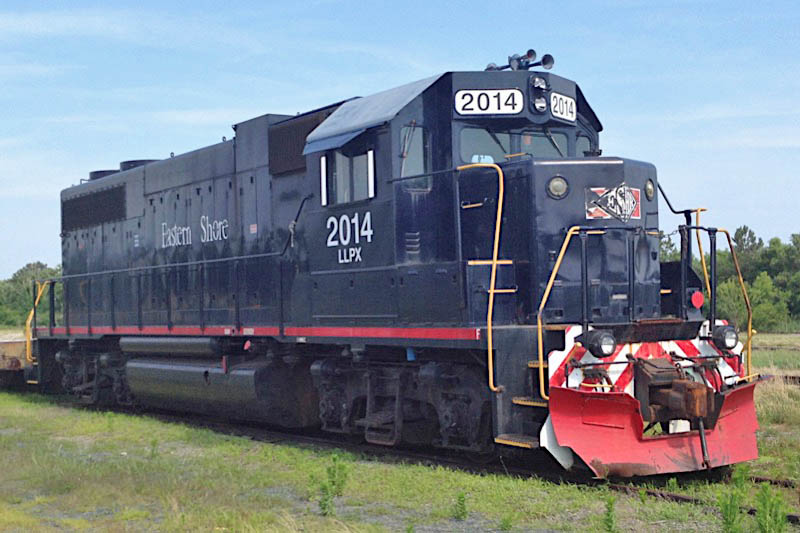
Eastern Shore #2014
Cape Charles, Va / Jun 2013 / Bryan Foster


Eastern Shore #2014
to Penn Central #2012
to Conrail #7672
to Locomotive Leasing Partners #2014
to Eastern Shore #2014
to Bay Coast #2014
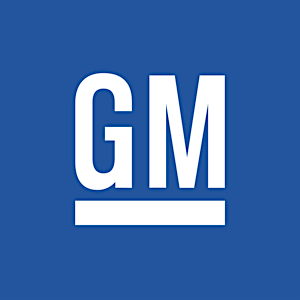
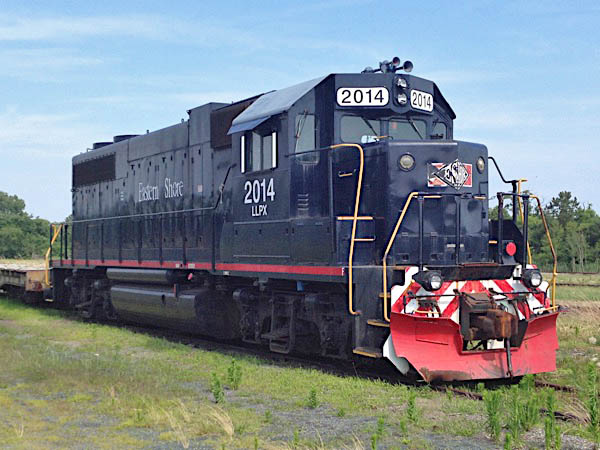
Cape Charles, Va / Jun 2013 / Bryan Foster
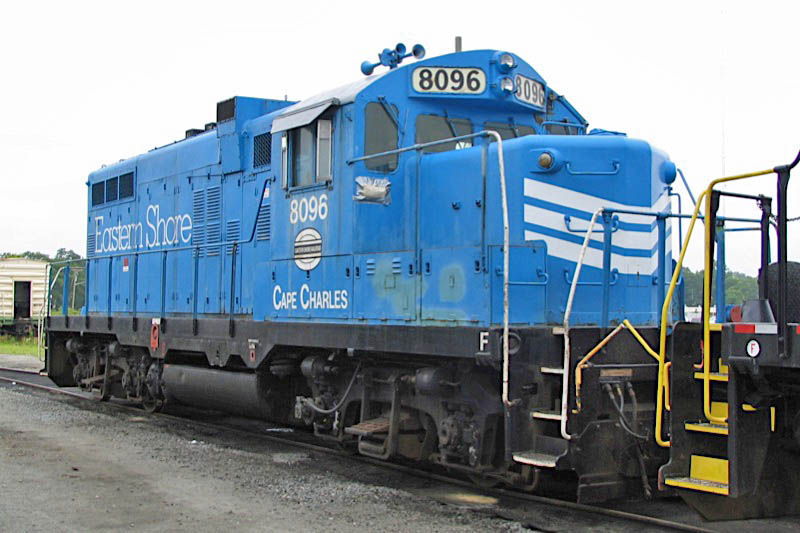
Eastern Shore #8096
Cape Charles, Va / May 2004 / RWH


Eastern Shore #8096
to Illinois Central Gulf GP10, 1969
to Eastern Shore #8096

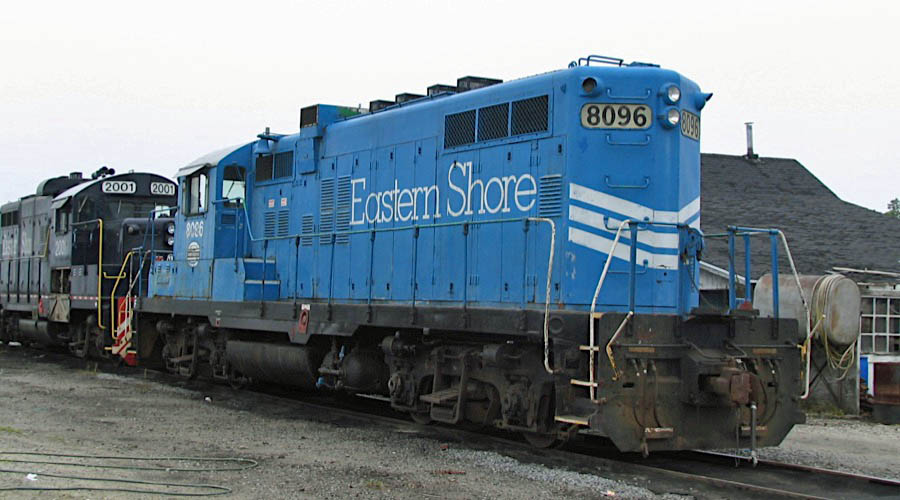
Cape Charles, Va / May 2004 / RWH
Dead Line
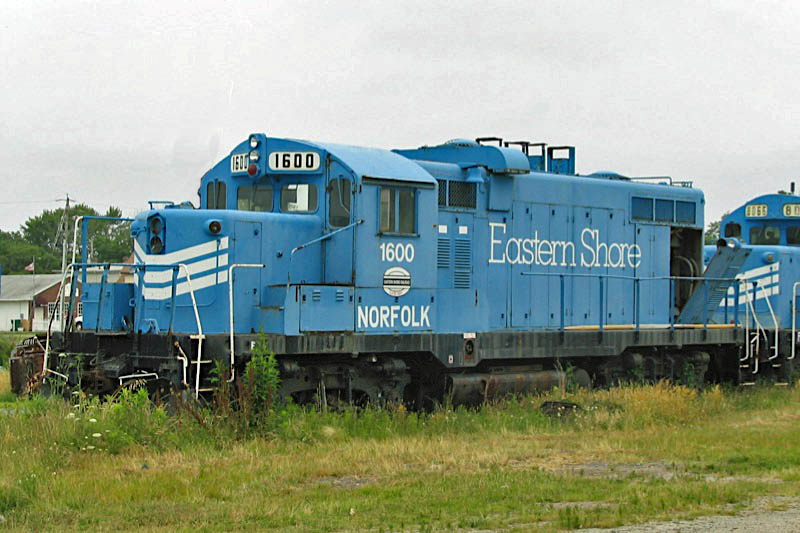
Eastern Shore #1600
Cape Charles, Va / May 2004 / RWH


Eastern Shore #1600
to Illinois Central Gulf GP8 #7706, 1974
to Hillsdale County #1600
to Eastern Shore #1600

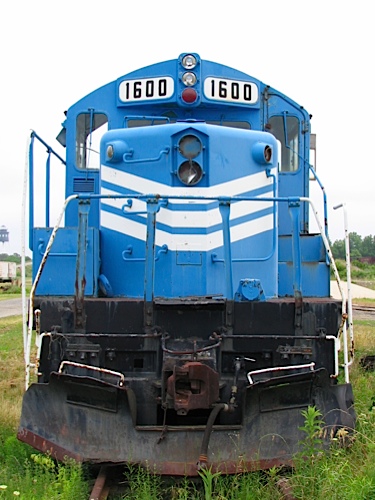
May 2004 / RWH
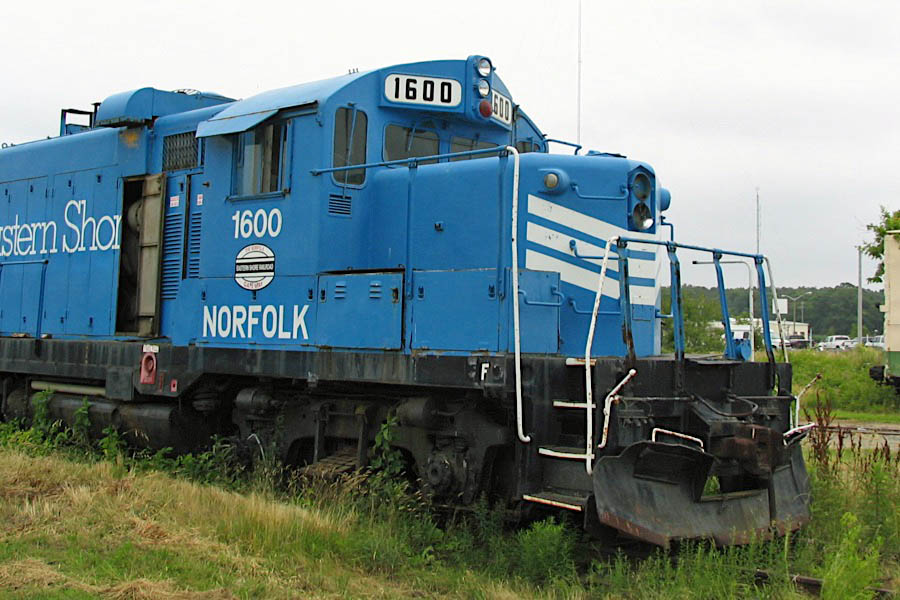
Cape Charles, Va / May 2004 / RWH
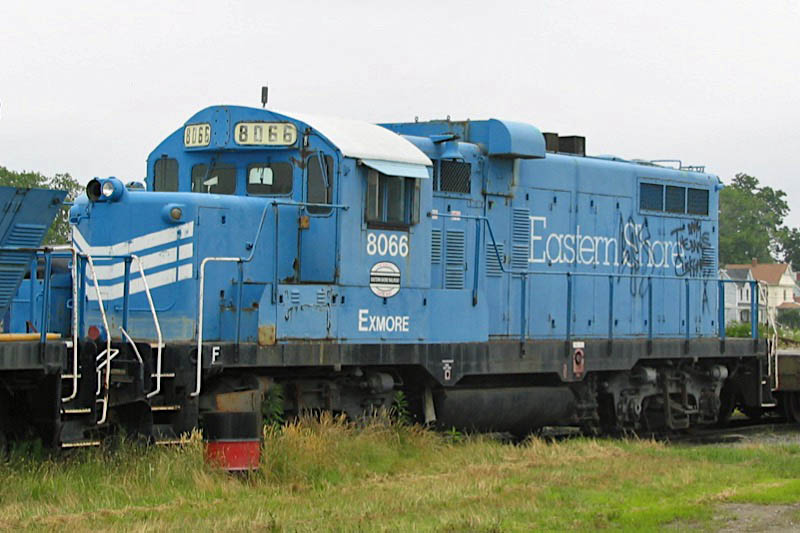
Eastern Shore #8066
Cape Charles, Va / May 2004 / RWH


Eastern Shore #8066
to Illinois Central Gulf GP10, 1974
to Eastern Shore #8066
to Winchester & Western #8066

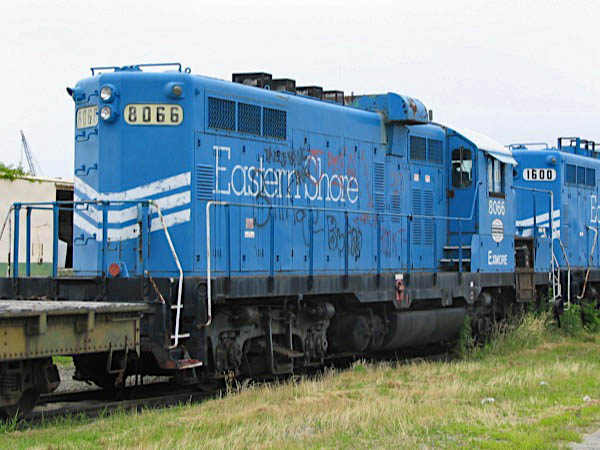
Cape Charles, Va / May 2004 / RWH

Gore, Va / Jul 2016 / RWH
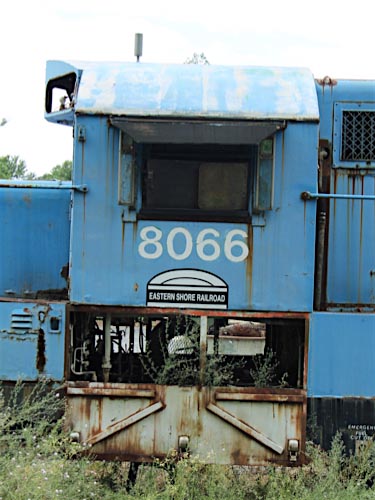
Jul 2016 / RWH
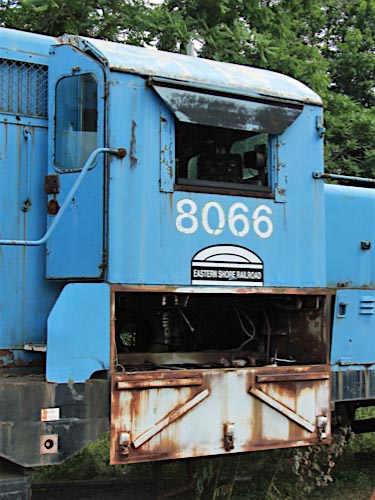
Jul 2016 / RWH
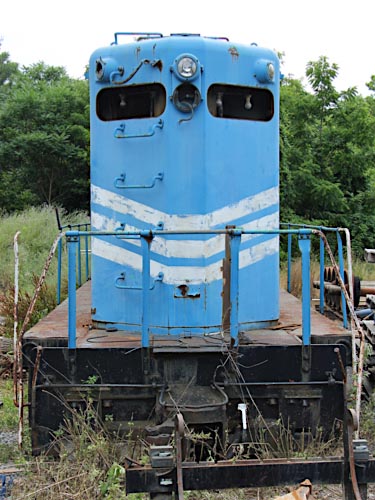
Jul 2016 / RWH
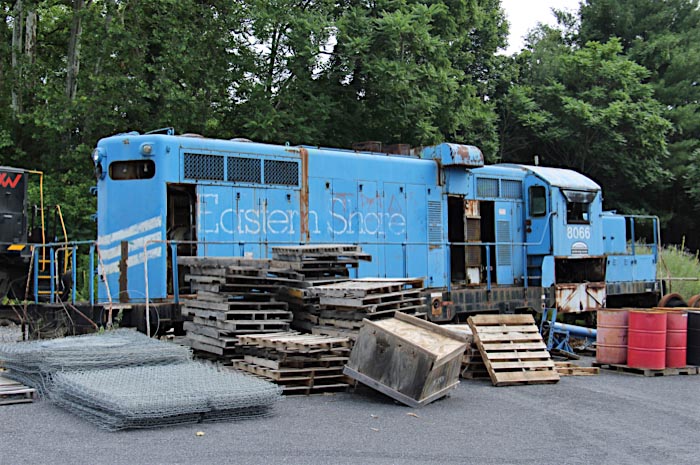
Gore, Va / Jul 2016 / RWH
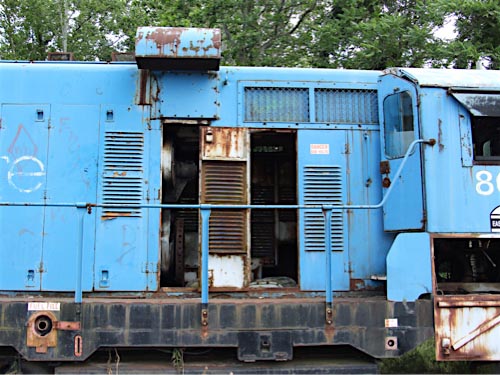
Gore, Va / Jul 2016 / RWH
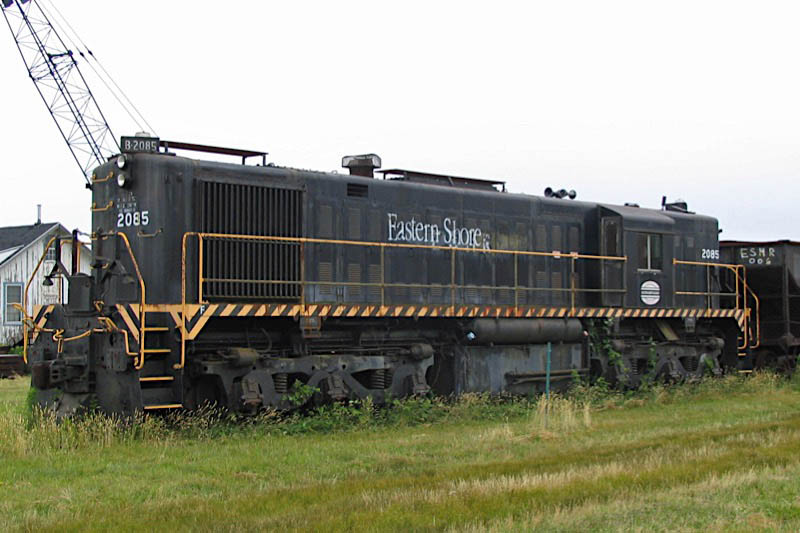
Eastern Shore #2085
Cape Charles, Va / May 2004 / RWH


Eastern Shore #2085
to Eastern Shore #2085
to Bay Coast #2085
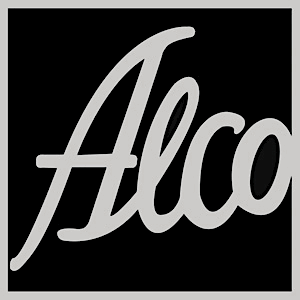
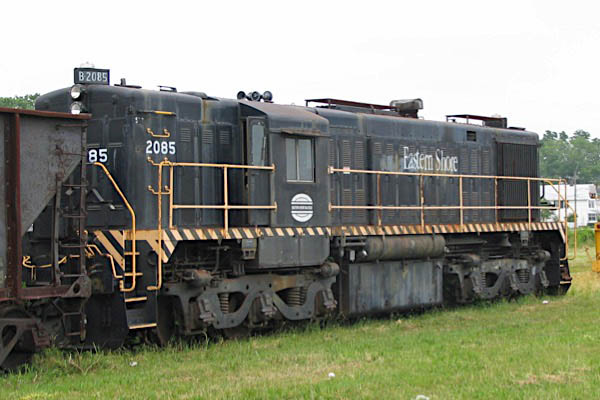
Cape Charles, Va / May 2004 / RWH
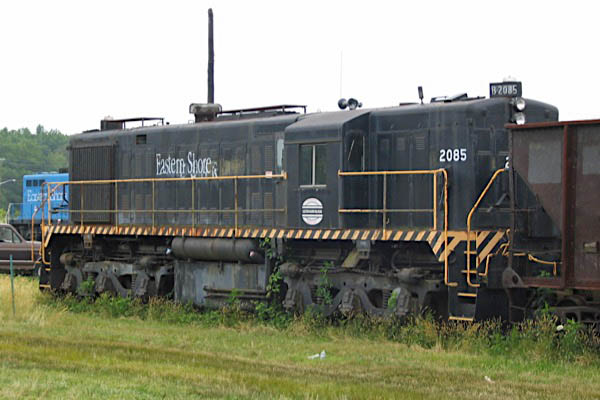
Cape Charles, Va / May 2004 / RWH
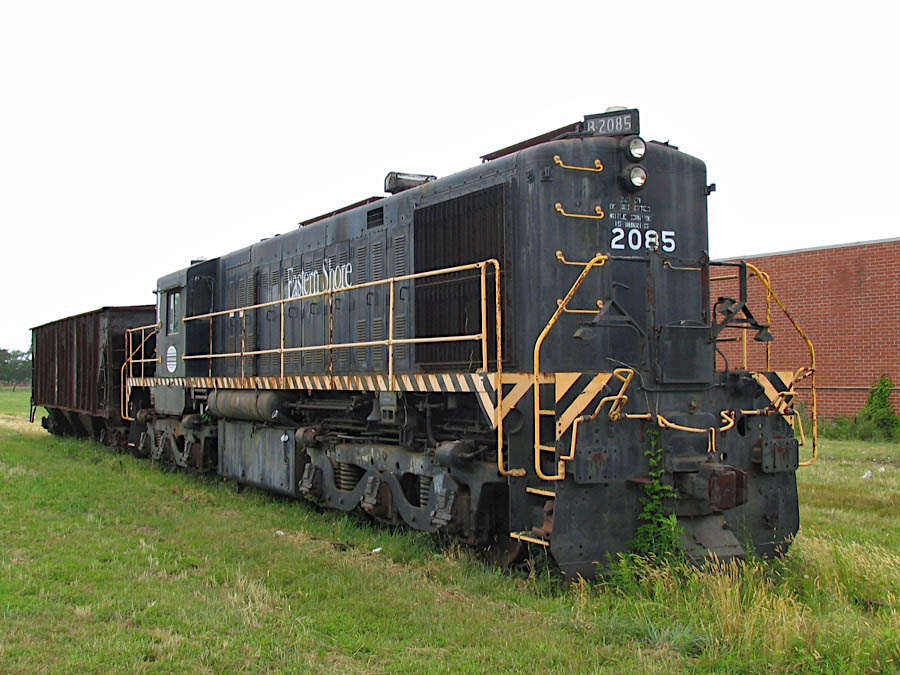
Cape Charles, Va / May 2004 / RWH
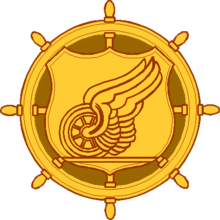 The Korean War and the intensification of the Cold War at the beginning of the 1950s caused the Army Transportation Corps to consider what it might need for a new land war in Europe. They came up with a requirement for a locomotive capable of running on the existing tracks of a wide variety of railway systems. Key parts of the specification included adjustable-gauge trucks, compact bodywork to fit restrictive loading gauges, and replaceable couplers to fit a variety of systems. The trucks accepted wheelsets between standard gauge 4 ft 8 1⁄2 in (1,435 mm) and 5 ft 6 in (1,676 mm), which encompasses the vast majority of the broad gauges in use worldwide, including those of the then Soviet Union and the Iberian peninsula.
The Korean War and the intensification of the Cold War at the beginning of the 1950s caused the Army Transportation Corps to consider what it might need for a new land war in Europe. They came up with a requirement for a locomotive capable of running on the existing tracks of a wide variety of railway systems. Key parts of the specification included adjustable-gauge trucks, compact bodywork to fit restrictive loading gauges, and replaceable couplers to fit a variety of systems. The trucks accepted wheelsets between standard gauge 4 ft 8 1⁄2 in (1,435 mm) and 5 ft 6 in (1,676 mm), which encompasses the vast majority of the broad gauges in use worldwide, including those of the then Soviet Union and the Iberian peninsula.
The specification was put out to tender, and two companies responded; GM and GE. Both companies were contracted produced a batch of thirteen locomotives which would be evaluated by the Army; the vendor providing the better locomotive would then produce the rest of the required locomotives. Both manufacturers delivered their sample batch in 1952, and after testing the GE locomotives, which were actually produced by ALCO as a subcontractor, were declared the winner, and a further batch of 70 ALCO MRS-1 locomotives were ordered.
Rolling Stock
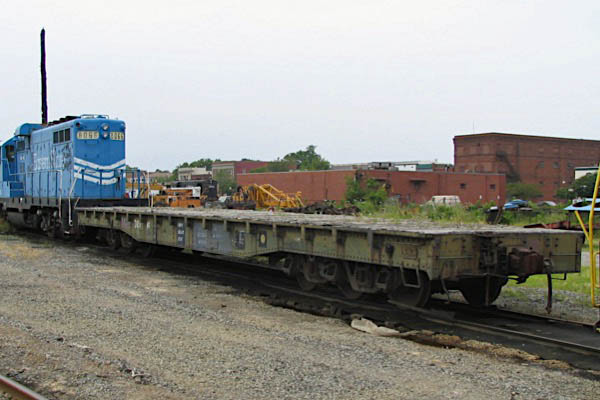
6-axle idler flat car / Cape Charles, Va / May 2004 / RWH
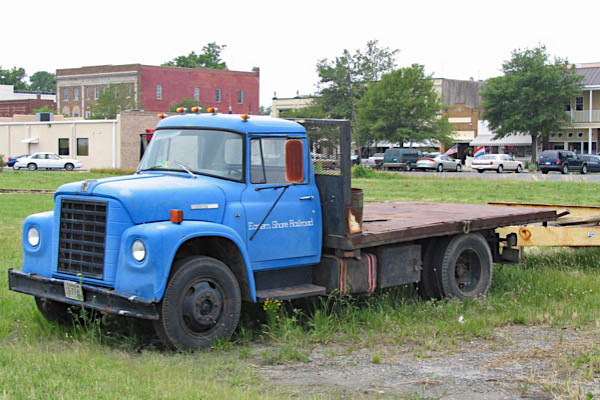
company truck / Cape Charles, Va / May 2004 / RWH
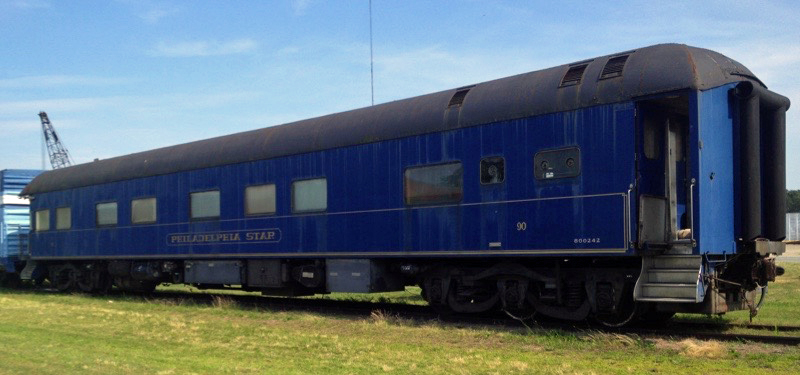
Eastern Shore #90 - "Philadelphia Star"
Cape Charles, Va / Jun 2013 / Bryan Foster
 Locations
Locations
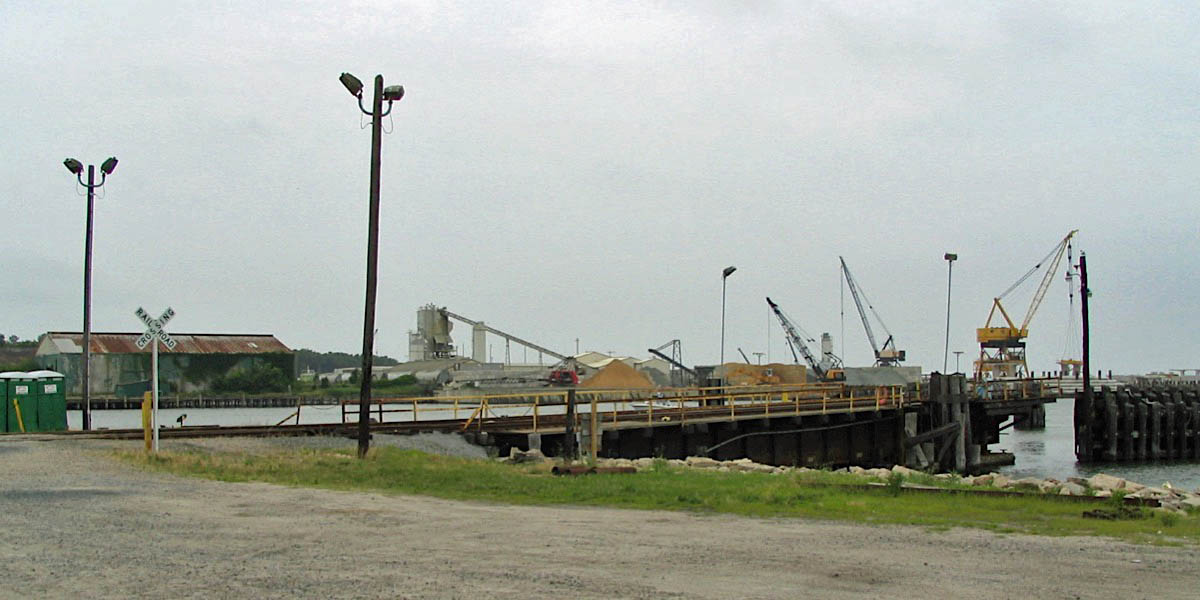
carfloat apron at dock / Cape Charles, Va / May 2004 / RWH
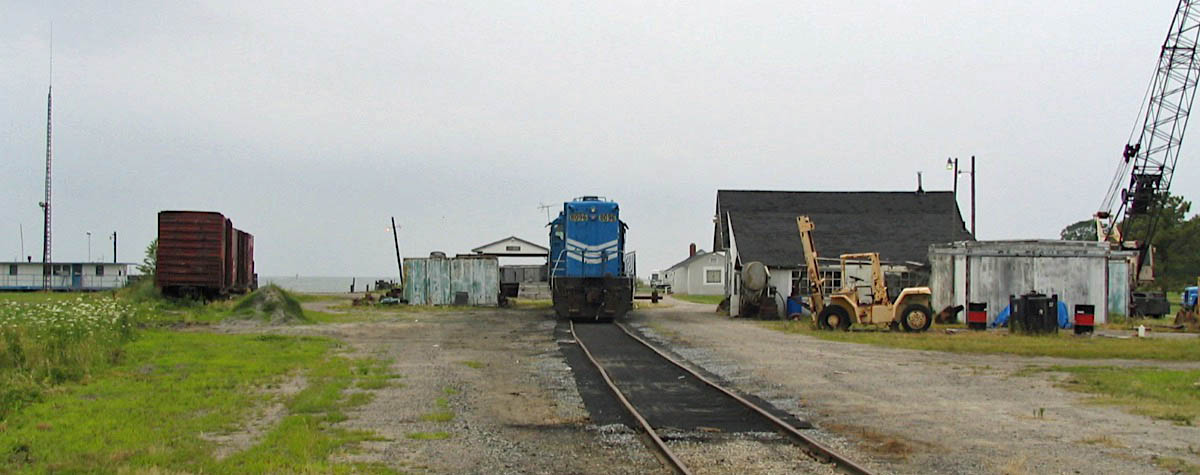
Cape Charles, Va / May 2004 / RWH

Click to see the Cape Charles carfloat area plotted on a Google Maps page
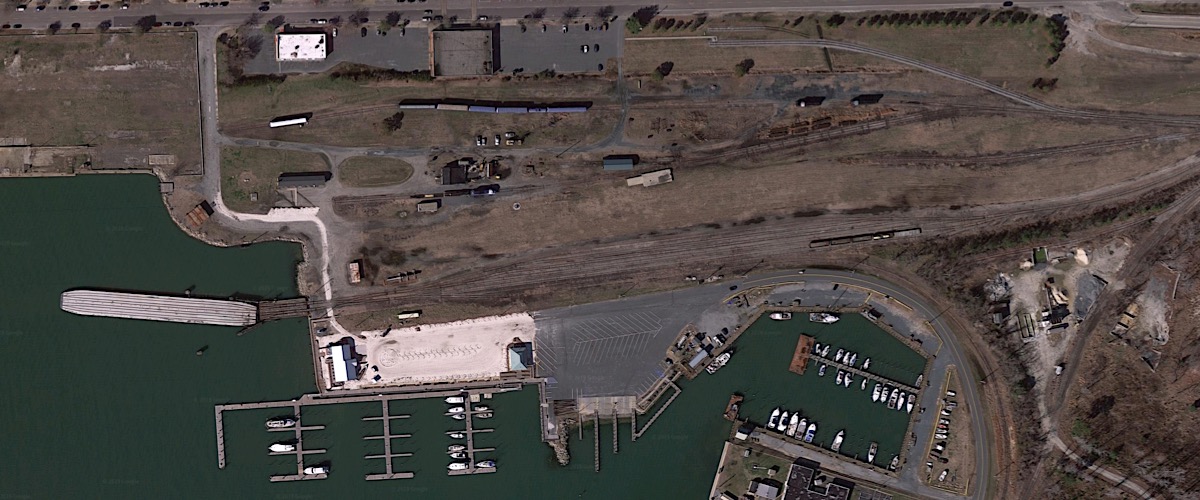
carfloat area overhead / Google Maps
 Cape Charles, Va
Cape Charles, Va

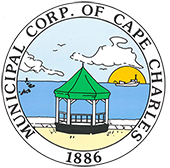 The Eastern Shore of Virginia, one of the earliest colonized areas in North America, remained a seafood and agricultural region with scattered small towns until the 1880s. At this time, the land that became the Town of Cape Charles consisted of farmlands and wetlands. The construction of what is now the Bay Coast Railroad led to the evolution of the area from a small agricultural community to a bustling railroad town.
The Eastern Shore of Virginia, one of the earliest colonized areas in North America, remained a seafood and agricultural region with scattered small towns until the 1880s. At this time, the land that became the Town of Cape Charles consisted of farmlands and wetlands. The construction of what is now the Bay Coast Railroad led to the evolution of the area from a small agricultural community to a bustling railroad town.
In the late 1870s, the Pennsylvania Railroad served many of the large cities on the east coast. However, along the Delmarva Peninsula, the railroad only came as far south as Pocomoke, Maryland. Extending the railroad farther south was only feasible if a barge and steamer link could be built near the southern end of the Delmarva Peninsula, where freight and passengers could then transfer across the Chesapeake Bay to Norfolk. When William L. Scott, a congressman from Erie, Pennsylvania with vast rail interests in the West, proposed this rail-sea link to Pennsylvania Railroad officials, very little interest was generated initially.
Despite a lack of support, Alexander Cassatt, then an engineer and Vice-President of Traffic with Pennsylvania Railroad, was interested in Scott’s proposal. In 1882, Cassatt resigned from his position to work with Scott on his proposed project. Traveling by horseback from Pocomoke, Cassatt personally laid out the 65 mile route the railroad would take and chose the spot for its southern terminus, harbor, and connecting channel, which he dredged at his own expense. At the southern terminus, Scott envisioned a town that would meet the needs of the railroad and its passengers. This led to the creation of Cape Charles.
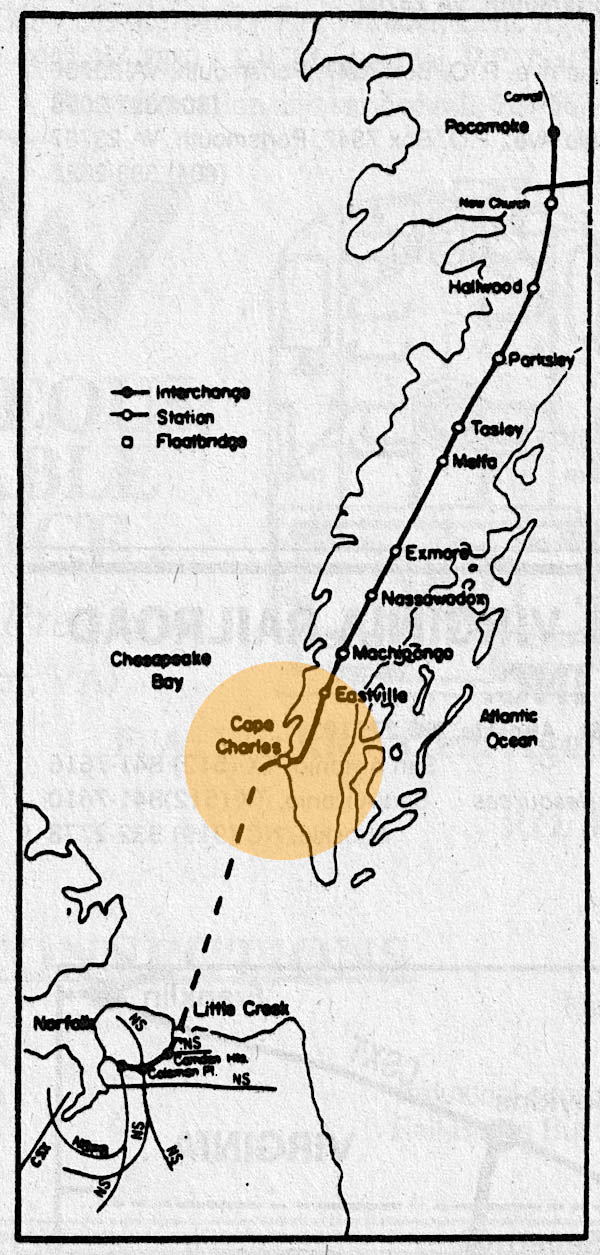
Official Guide map / collection
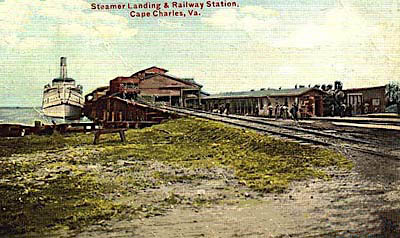
collection
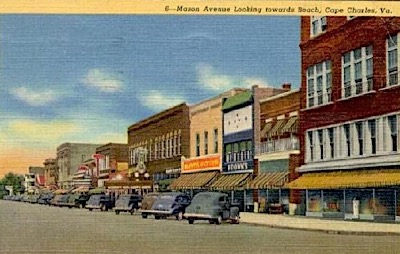
web
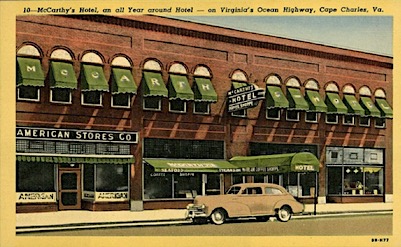
web
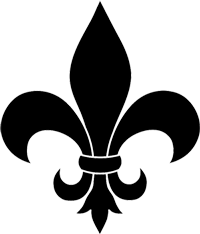 Lagniappe
Lagniappe
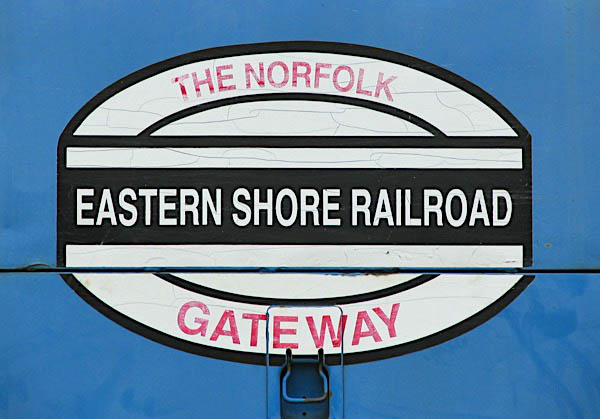
"The Norfolk Gateway"
Cape Charles, Va / May 2004 / RWH
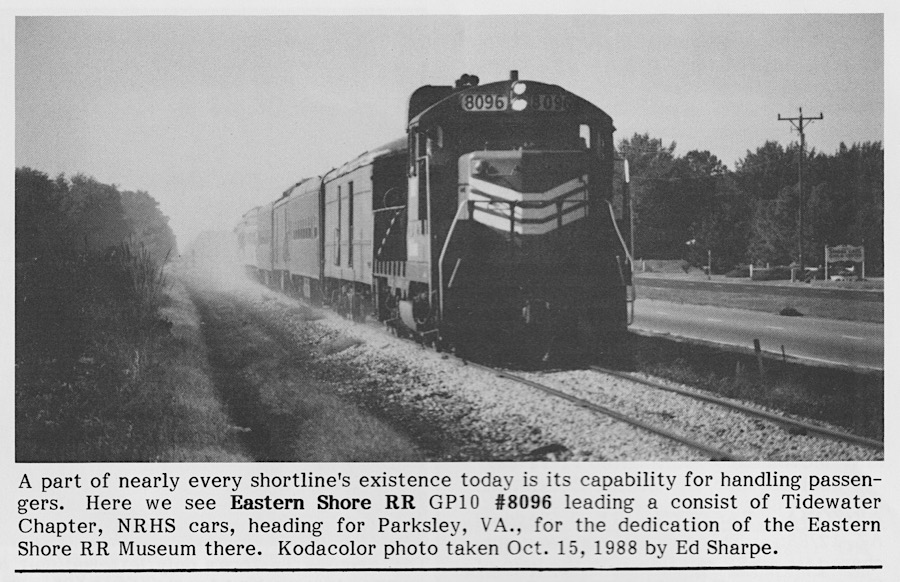
The Short Line #96 / Jan 1989 / collection
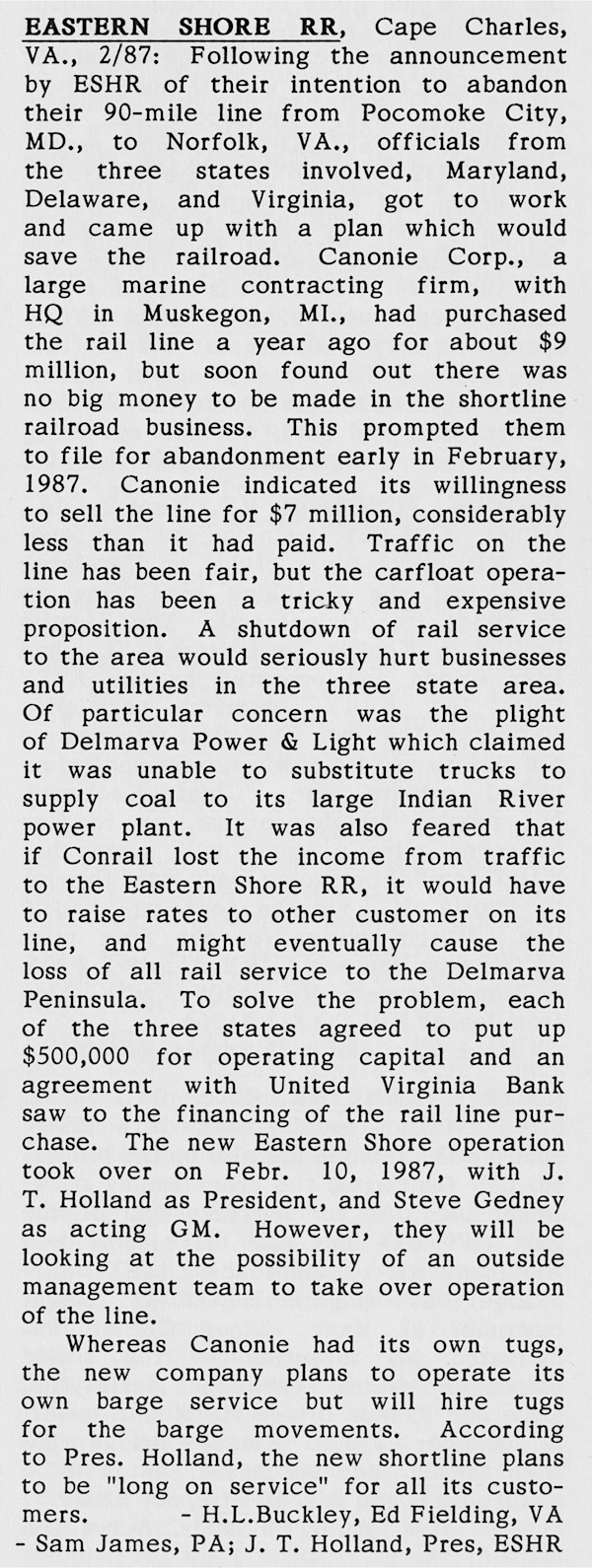
The Short Line #83 / Feb 1987 / collection
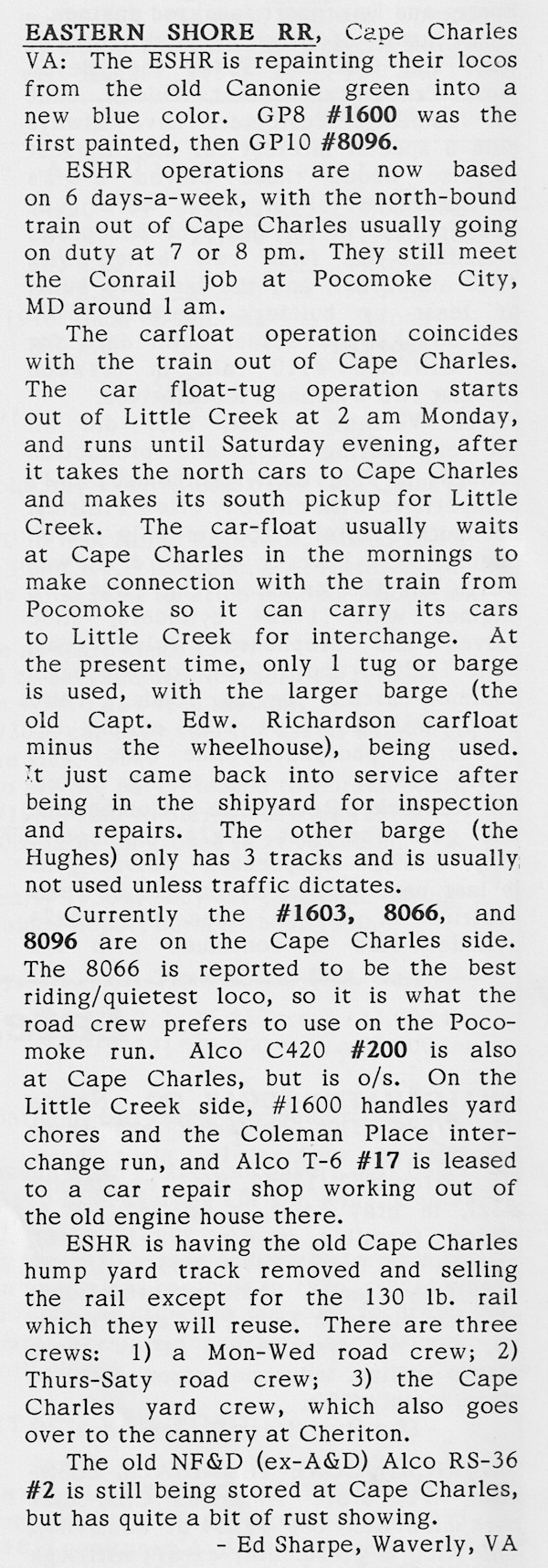
The Short Line #88 / Oct 1987 / collection
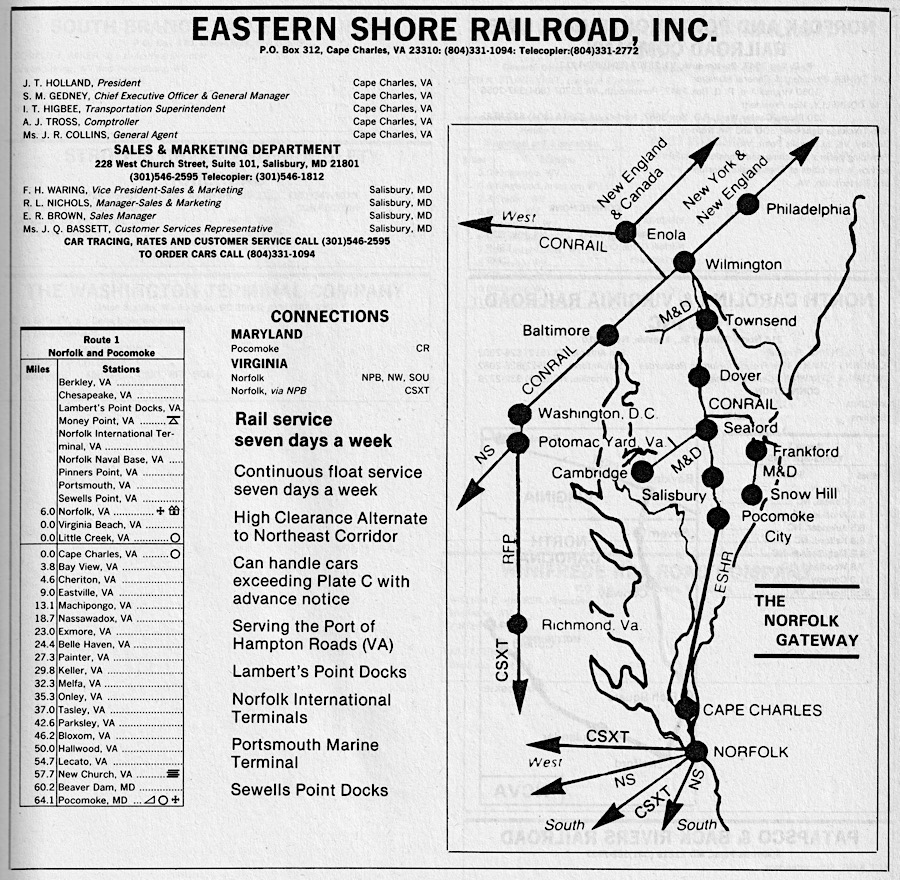
1988 Official Guide ad / collection

 During a vacation to the Eastern Shore of
Virginia in 2004, it was a pleasure to discover the ESHR and to
drive through numerous little peninsula towns along the right of
way. Having grown up watching ICG Paducah rebuilds in my home town,
the Eastern Shore's roster is right up my alley. They had a great
GP8/GP10 collection, even though some of the units do not appear to be
operating. I always like it when railroads name their units for the
various towns they serve along the line. Of course, the well-known
carfloat operation is a fantastic treat for shortline fans, and the
yard and service area near the float apron in Cape Charles offers
lots to discover. The ex-Army MRS-1 Alco is a rare bird as well. The
Eastern Shore Railway museum, midway up the line, has some nice
rolling stock on display.
During a vacation to the Eastern Shore of
Virginia in 2004, it was a pleasure to discover the ESHR and to
drive through numerous little peninsula towns along the right of
way. Having grown up watching ICG Paducah rebuilds in my home town,
the Eastern Shore's roster is right up my alley. They had a great
GP8/GP10 collection, even though some of the units do not appear to be
operating. I always like it when railroads name their units for the
various towns they serve along the line. Of course, the well-known
carfloat operation is a fantastic treat for shortline fans, and the
yard and service area near the float apron in Cape Charles offers
lots to discover. The ex-Army MRS-1 Alco is a rare bird as well. The
Eastern Shore Railway museum, midway up the line, has some nice
rolling stock on display.
Links / Sources
- Wikipedia article for Eastern Shore Railroad
- Diesel Shop roster for Bay Coast Railroad
- Delmarva Central Railroad website
- Edward A. Lewis, American Shortline Railway Guide - Fifth Edition (Kalmbach, 1996) 114
- Charles W. McDonald, Diesel Locomotive Rosters (Kalmbach, 1992) 67
- 1988 and 1994 Official Railway Guide
